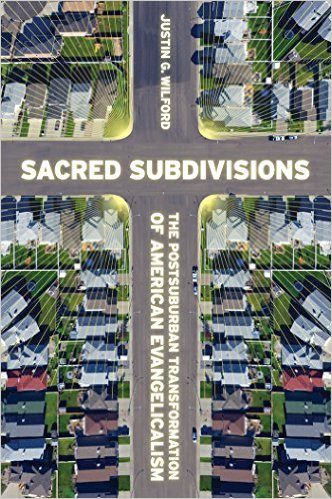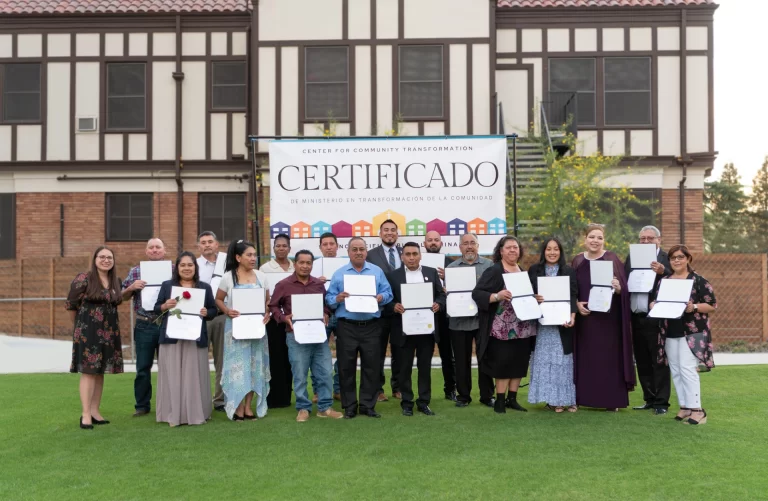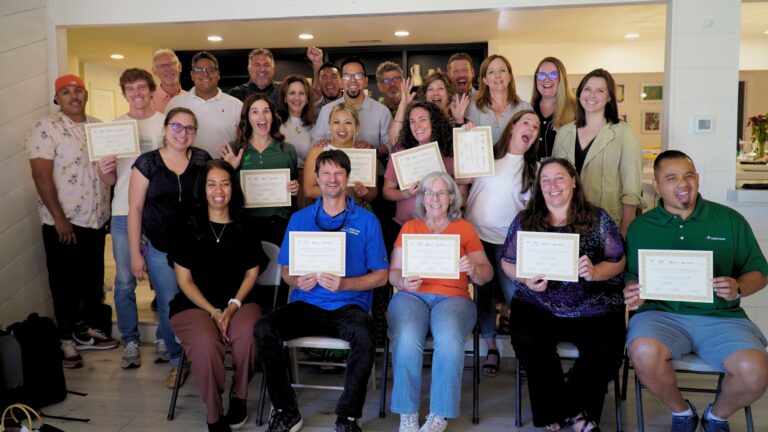 Book Review by Quentin Kinnison, Ph.D.
Book Review by Quentin Kinnison, Ph.D.
In Sacred Subdivisions, Justin G. Wilford contends that the mega-churches’ locations at the edge of major cities allow for a kind of community that gives them viability and credibility in a post-Christian, postsuburban, secularized context, a theory he investigates through his subject church, Saddleback Community. Wilford–UCLA’s visiting professor of cultural geography with a PhD in cultural geography from UCLA–researches cultural geography, evangelicalism, and social and spatial theory. His central question in Sacred Subdivisions is “How can we account for the embodied, historicized, and especially emplaced success of Saddleback?” (47)
Having critiqued elements of Saddleback Community in my own study, I find his investigation of Saddleback an intriguing one. The mega-church struggle to make the “big church feel small” (166) raises questions about congregational size. If anthropologist Robin Dunbar is to be believed, we are capable of meaningful relationships with nearly 150 people. What do we do with the other 22,268? Regarding the legitimacy of Post Denominational Evangelicalism (PDE), through Purpose Driven Church, Purpose Driven Life, and P.E.A.C.E., Saddleback and others (i.e., Willow Creek) seem to recreate denominational structures under their own influence for distribution to thousands of other churches. Is this post-denominationalism or a re-centering to neo-denominational structures?
Turning to Wilford’s central question, how are we to define “success?” Wilford, assuming Saddleback is successful, attempts to discover how that success has occurred. Certainly lives are influenced through the ministry of the PDE mega-church–oftentimes for the better. Is this alone success? In his conclusion, Wilford writes: “The expansive, world-conquering image of the conversionary evangelicalism is re-scaled into the individual narratives of postsuburbia so that the witnessing Jerusalem of Acts 1 becomes one’s master-planned, tract neighborhood” (164, emphasis added). Here he describes witnessing alone (reference Putnam’s Bowling Alone). Diffusion as described in Sacred Subdivisions promotes isolation. Success must be more than gathering crowds in order to send them home to live good, albeit lonely lives. What is community? The early church’s witness was often expressed by radical love for one another and the world.
Rather than salivating at the numerical “success” of the PDE mega-church, churches should facilitate connections: to God, to one another, and to meaningful rituals. Current research on the Millennial generation indicates a mass exodus from the evangelical church. They’re seeking roots: relationships with people from diverse ages, races, socio-economic backgrounds, etc., and rituals that meaningfully connect them to God and each other. These become the source of their witness to the world. According to Wilford, this is what Saddleback is attempting through small group meetings.
For those of us in the central valley and generally removed from the extraordinarily large cities like Los Angeles, New York, and Chicago, this gives us hope that ministry success occurs by connecting people to God and one another–not by building a mega-church. Wilford’s work may demonstrate interesting realities for the moment, but does not show us the future. Academically, that is sufficient.
Sacred Subdivisions reflects a significant academic achievement as a published version of Wilford’s dissertation. However, as dissertations are not written for wide distribution, it is not easily accessible and most outside the academy will likely find it inaccessible. It contains considerable insider language like “Postmetropolis, Postsuburbia, and Urban Differentiation,” and conceptual frameworks like “performance” theory, “secularity,” and “fusion, de-fusion, and diffusion.” It is an important contribution, but one must be ready to critique significant assumptions and to engage in the academic nature of the work. It will surely benefit those who are so ready.”





